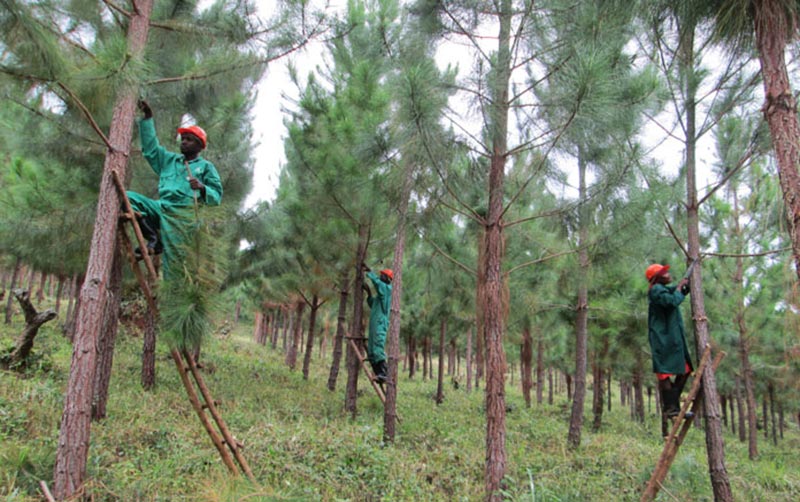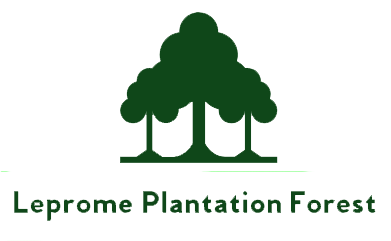ADAPTED FROM THE INDEPENDENT MAGAZINE UGANDA
Dr. Clement Okia, an Associate Professor in the Faculty of Agriculture and Environmental Sciences at Muni University Arua, talked to The Independent’s Ronald Musoke about the ever rising rate of deforestation in Uganda and what the government needs to do to recover the country’s forest cover
Why should Ugandans be worried about the massive loss in forest cover around the country?
Uganda’s forest cover has been declining from 24% in the 1990’s to about 8-9% currently. This should worry us but should not be interpreted like we are heading towards doom. It’s possible to reverse the trend and achieve Uganda’s international commitments and local targets if we become committed and take bold steps. In the past, population growth was not much of a worry because wood demand for firewood and charcoal was still within limits and the trees outside forests contributed to about 70% of tree cover. But we now know that massive tree cover loss is occurring outside these protected areas. Under the forestry sector reform, these forests and trees on private land were placed under the control of land owners and the understaffed and poorly funded district forestry services. District local governments mainly see forests and trees outside central forest reserves as sources of revenue but, with no funds being re-invested into growing or protecting trees and forests, this leads to the challenges we are seeing now. This cuts across all districts including those whose major source of revenue is from tree/forest products. Community tree growing has largely been left to non-profit organisations and community-based organisations and yet many development partners are also not willing to commit to long-term tree-based projects through these organisations.
What will it take to reverse Uganda’s rapid tree cover loss?
As we continue to support the National Forestry Authority and the Uganda Wildlife Authority to take care of central forests and national parks respectively, we also need an ambitious strategy and action for engaging the wider community in tree growing. I am talking about tree growing not the ceremonial tree planting. Trees are perennial crops and like other crops, planting is just one activity but if you need to reap from the planted crops you manage them according to the crop requirements. Growing trees as plantations and woodlots alone will not achieve the level of restoration Uganda has committed to (planting 2.5million hectares by 2030). The bold steps needed could include compelling every farmland owner to commit a certain percentage of their land to tree growing. I would suggest something in the range of 5-10%. These trees could be established as woodlots, planted in wide rows, placed in boundaries, or scattered in livestock farms. The species for each agro-ecological zone or region can be easily worked out. For tree growing to work, it’s not just going to be through tree seedling distribution the way it’s currently being done. We can learn from the success of SPGS achieved through having a trained team who guide on tree planting and management. In that regard, we need to review the structure of the district forestry service to provide for about three technical people and then attach forestry technicians in sub-counties. Because we’re aiming at integrating trees in all landscapes including farms (agroforestry/farm forestry), the forestry technician will fit into the existing agriculture extension system at the sub-county. They will support NGOs, CBOs and community groups in raising their own tree planting materials. Finally, let’s not forget that most of our indigenous trees have the ability to grow back after being cut (regenerate). In addition, there are a lot of indigenous tree seeds in the soil (soil seed bank) which allows trees to grow back but farmers keep cutting them during cultivation. Studies have shown that in many areas, there is an underground forest waiting to grow back if given chance. As we grow the trees of our choice, let’s give the underground forest the opportunity to grow back.

An afforestation scheme known as the Sawlog Production Grant Scheme (SPGS) has been running in the country for the last 16 years. Among its original objectives was the reduction of deforestation in Uganda’s natural forests but, judging by the ever increasing forest cover loss in Uganda, some experts say the scheme has not achieved much. Is this a fair assessment especially when you compare the acreage of trees planted since 2004 with the acreage of lost forest cover?
The basis you have used for judging the SPGS may not be correct. There has not been another forestry related project/programme that has transformed tree growing the way the SPGS has done in Uganda. The SPGS has been successful because it achieved its targets and has triggered massive interest in commercial tree growing like never before. The SPGS I planted 10,000 hectares; SPGS II- 32,000 hectares and SPGS III-has targeted to establish 32,000 hectares. From the name, Sawlog Production Grant Scheme (SPGS), it tells you the trees planted were to provide logs which would be converted into timber. At the design of SPGS, studies had shown that Uganda would become deficient of timber in the near future if no immediate action was undertaken. People have gained knowledge and skills on best practices in commercial tree growing and they know that there is money in growing trees if it’s done right. We should be grateful for the long-term support provided by development partners and the government towards SPGS. Increased production of timber from outside natural forests has been achieved to the extent that private tree growers are asking for lifting of restrictions on timber export.
What is your view in regards to some conservationists’ thinking that mono species forests are a defective idea of forest restoration?
The establishment of mono species forests in form of plantations or woodlots is not a defective idea because this form of forestry serves specific needs; for instance, poles for construction and electricity transmission, firewood, charcoal, timber, etc. In this case, you need a uniform species that fits into a uniform management and harvesting cycle referred to as a rotation. In forestry planning, there are areas for natural forests and others designated for forest plantations. We can only run into problems if all our plantations are only of one species. Environmentalists have castigated mono species forests for a long time especially those with Eucalyptus and Pine but in my opinion, some arguments stem from limited understanding of forestry and environment. This doesn’t mean that some trees may not have negative effects on the environment. What is critical is where the trees are planted and purpose for planting.
So then what’s your comment about the government’s push to replant millions of indigenous trees?
The government has started a campaign to plant 40 million trees, particularly indigenous species, every year. But if we strictly follow this narrative, our ambition of restoring tree cover may take much longer to be realised. I am saying this from my over 20 years’ experience in supporting tree growing among small-scale farmers in many parts of Uganda and Africa. First, we could ask, why are farmers not growing indigenous trees? Which species do farmers prefer to grow and why was SPGS successful? Briefly, most farmers are not planting indigenous species because they consider their benefits to be long-term and there are no seed/seedlings supplies. Farmers mainly prefer to grow fast growing tree species and a majority of these are exotic or naturalized species. SPGS has been successful because it focused more on fast growing exotic tree species and there was land to lease from NFA or other land owners, there was technical support and most importantly, there was a financial incentive. While the elite want trees grown for provision of environmental services mainly, the private land owners and farmers want to grow trees to meet their needs and in a short to medium term. My considered opinion, which of course may be challenged by some, is that we need to go for a mix of species both indigenous and exotic and take the smallholder farmers’ interest into consideration. Trees should be grown to meet human needs and along the process the environmental benefits will be realised.

